Keyword Tetris: Amazon Keyword Tips for Getting Creative with Awkward Search Terms
Amazon SEO typically requires the use of high-value keyword content with a mix of root and long tail keywords. Keyword research tools are easier than ever to access, but there’s a problem. When writing, you have to meet the Amazon shopper on their terms, specifically their search terms. If you’ve ever written a listing with Amazon keyword research search results from Helium 10, Zonguru, Ubersuggest, or any other such platform, you might have noticed that the most relevant keywords can be the worst ones to use in a sentence.
Think about how frequently—or rather, infrequently—you and your customers go to the Amazon search bar and use proper grammar, or search in a way that’s 100% relevant to what you actually want. Do you really want plural “tents for camping?” Or are you looking for a specific, singular “backpacking tent?”
When a loved one gets you a beautiful piece of jewelry, do you tell friends to “Look at my ‘necklace 24k charm jewelry for women’?” Or do you say, “Look at this ‘gold charm necklace’?”
Why do we speak to search engines differently than we speak? Well, we all know Google can’t read our minds. Not yet, anyway. The way people search, they tend to:
-
Start with a super-specific type of product in mind (dry bag 40L).
-
Start not knowing exactly what they want (kayaking bags).
-
Start with a generic phrase and take that to the Amazon search box. Then, they tack more words to the end of it as they rethink their search (camping bags dry bags 40L with straps).
The effect is that we train Amazon SEO bots to value really weird key phrases. These bots don’t care about grammar or flow, but like you know, customers who read your product listings very much do.
In today’s blog, we’re going to explore how this sort of thing happens, and how to use search terms to achieve superior ranking. We’ll give you a framework for understanding different types of relevant Amazon keywords, and what kinds of sentences they work in. Once you have that, if you can identify things such as “this keyword phrase would work in the middle of a question sentence,” you’ll be able to implement more and more high search volume keyword phrases without sacrificing quality or readability. Let’s get started!
How Awkward Phrases Become Relevant Keywords
Shoppers train Amazon’s web-crawling “spiders” (SEO bots) to crave certain kinds of “bait” (keyword content). Sellers need to put out matching “bait” to attract those same spiders, who will then show the shopper the relevant listings.
This is abstract, so let’s explore a concrete example.
1. You’ve got an anniversary coming up, and you want to make it special. You don’t know anything about jewelry, but you go to Amazon and search “necklace.” You get something like this:
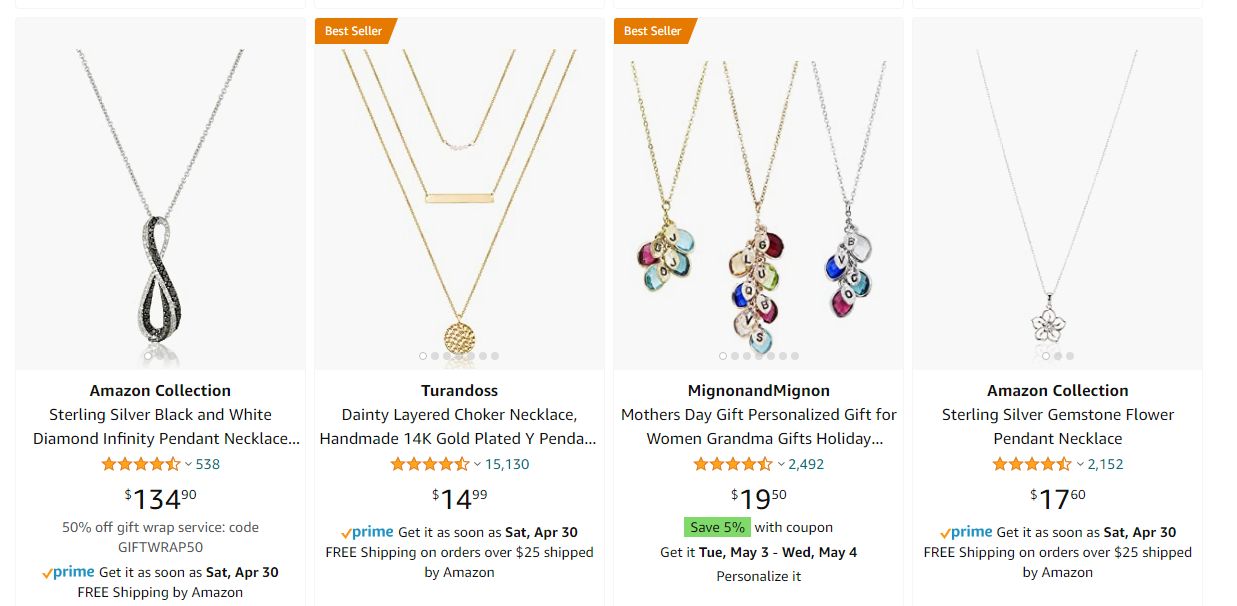
2. You scroll up and down the page and don’t see an ideal choice. You’re drawn in by the gold ones though, and you know 24k is more valuable than 14k. So you add 24k to your query, searching “necklace 24k.”
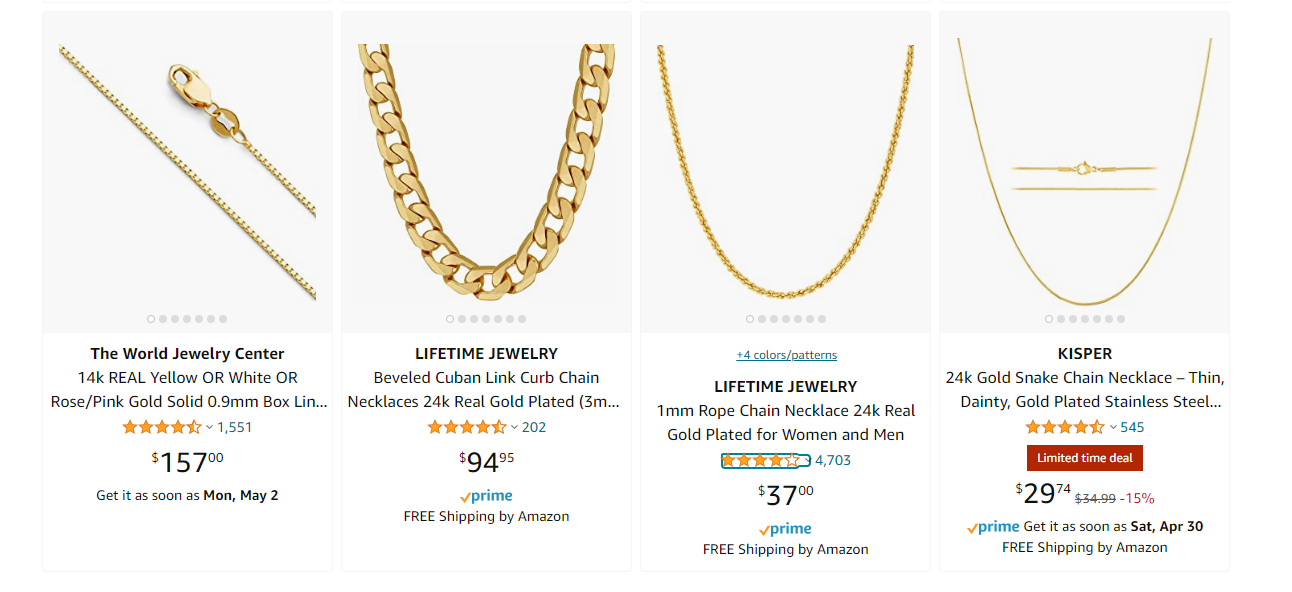
3. That’s better, but these necklaces seem a bit plain for the tastes of the future recipient. You narrow it down, adding “charm jewelry” and then you notice Amazon is auto-suggesting “for women” to go at the end of it. You type “necklace 24k charm jewelry for women,” and the search results look something like this:
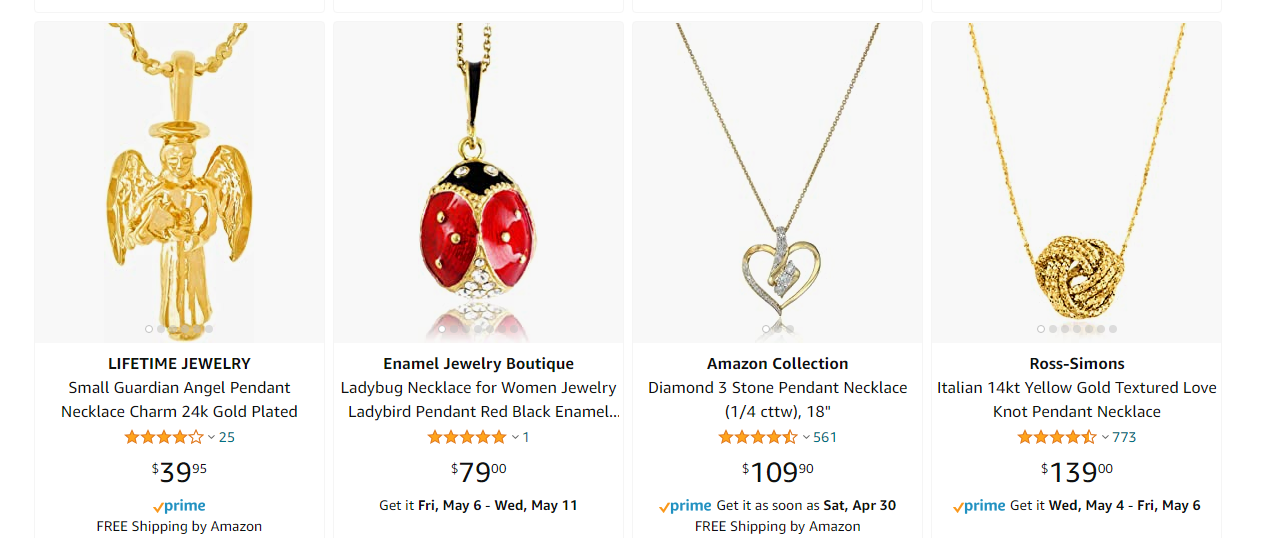 4. Now you’re getting somewhere. You can find a nice charm necklace that’s catered to the personality of the person you are giving the necklace to. You add that adorable little ladybug necklace to your cart, buy it, and start mentally drafting a card to go with it where you call your significant other your “ladybug.” How cute!
4. Now you’re getting somewhere. You can find a nice charm necklace that’s catered to the personality of the person you are giving the necklace to. You add that adorable little ladybug necklace to your cart, buy it, and start mentally drafting a card to go with it where you call your significant other your “ladybug.” How cute!
5. Your shopping experience ends here, but there’s a ripple effect. You have taught the algorithm that “necklace 24k charm jewelry for women” is a valuable keyword phrase that leads to a purchase. It gets suggested to other shoppers, and eventually, sellers start purposefully using it, because it is a specific, long tail keyword. And it is difficult to implement, making it a lower-competition word.
6. Copywriters like us then need to figure out how to perform Amazon keyword research and use such tricky, relevant keywords cleanly in human-friendly text.
So, how do we incorporate Amazon keywords that are such a mouthful such as “necklace 24k charm jewelry for women?" This writer’s first instinct is to use it in the product title, where slightly odd grammar and more warehouse-sounding relevant keywords are okay. Are there other possibilities? For sure—but part of getting good at the game of Amazon Keywords Tetris is recognizing the strengths and weaknesses of each type of phrase.
Transform Odd Keywords into the Right Keywords
Learn How to Use Keywords on Amazon Effectively

At this point, you already have your favorite keyword research tool and you've done a deep dive to find the best keywords for your category and product.
This is a good first step, but a massive search term list does not a compelling product listing make. Amazon users are smart and will sniff out keyword stuffing in an instant. That's why you've got to be clever and creative.
Just like how long, straight pieces or simple square pieces are more versatile when playing Tetris, simpler keywords are easier to fit anywhere than others. But what about all the other types of odd phrases? Let’s break them down, one by one, and show you the “shape” of each keyword and how it fits into the “puzzle” of a sentence. For simplicity, we’ll use examples that all relate to “necklaces.”
More of a visual learner? Watch this video about the Art of adding keywords to your Amazon listing:
Make the Most of Your Amazon Keyword Research
Here is a comprehensive collection of Amazon keyword types. Some are important keywords that sound tricky but have a high search volume and need to be incorporated into the product details. Others should be reserved for your search terms and backend keywords. And that's okay! This list is going to help you decided which should go where:
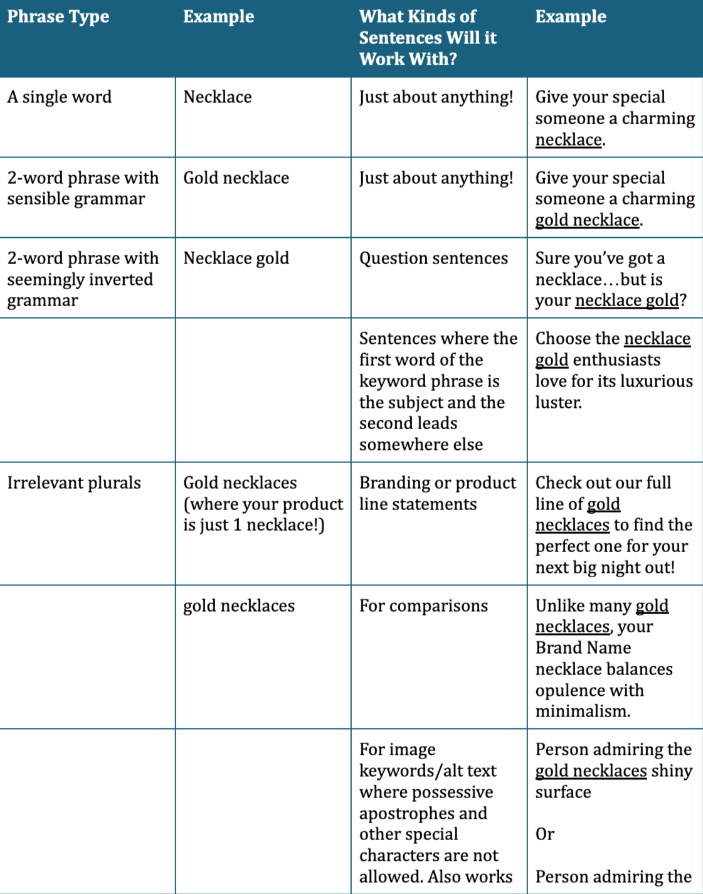
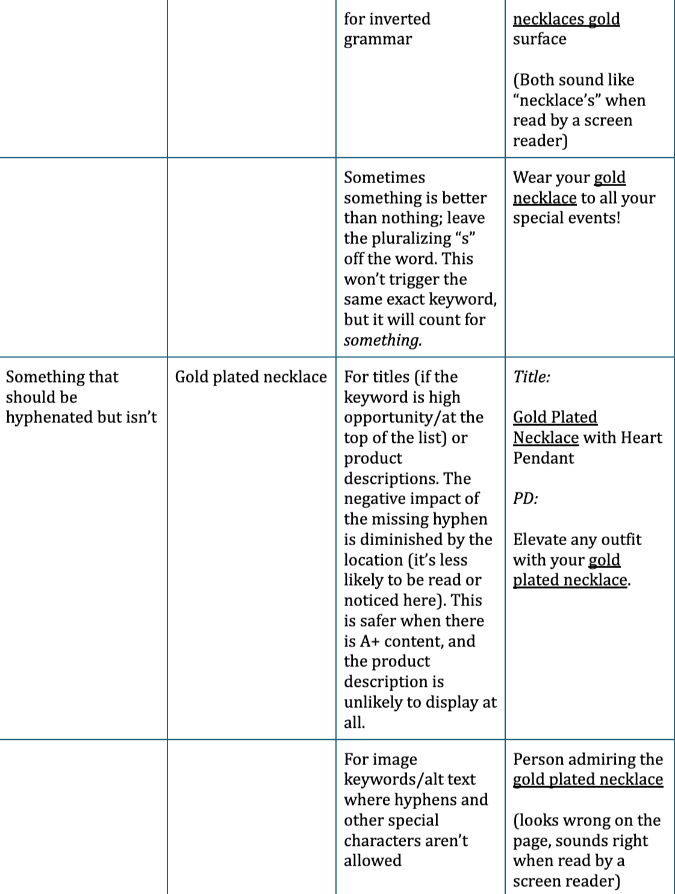


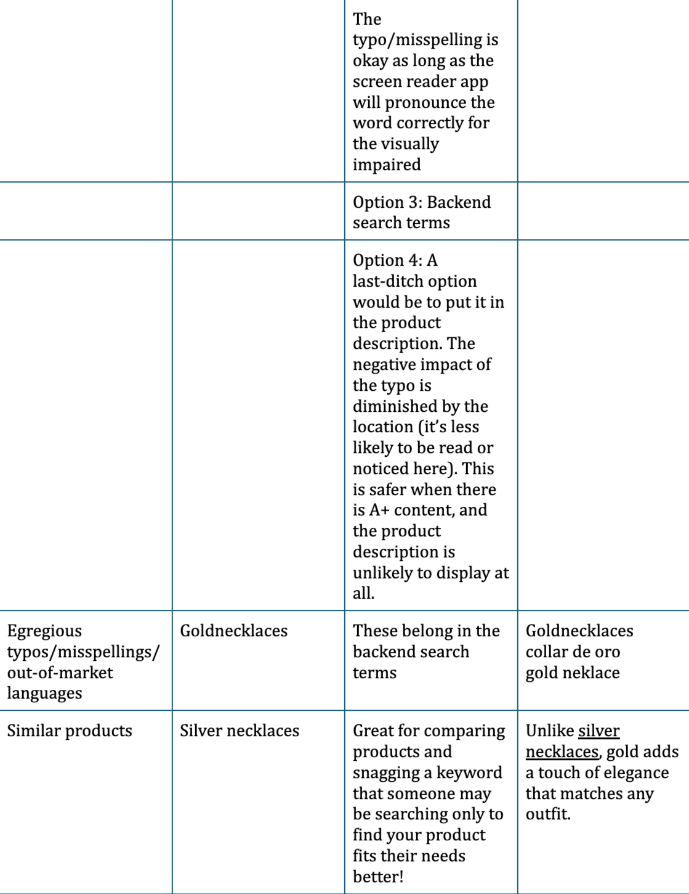
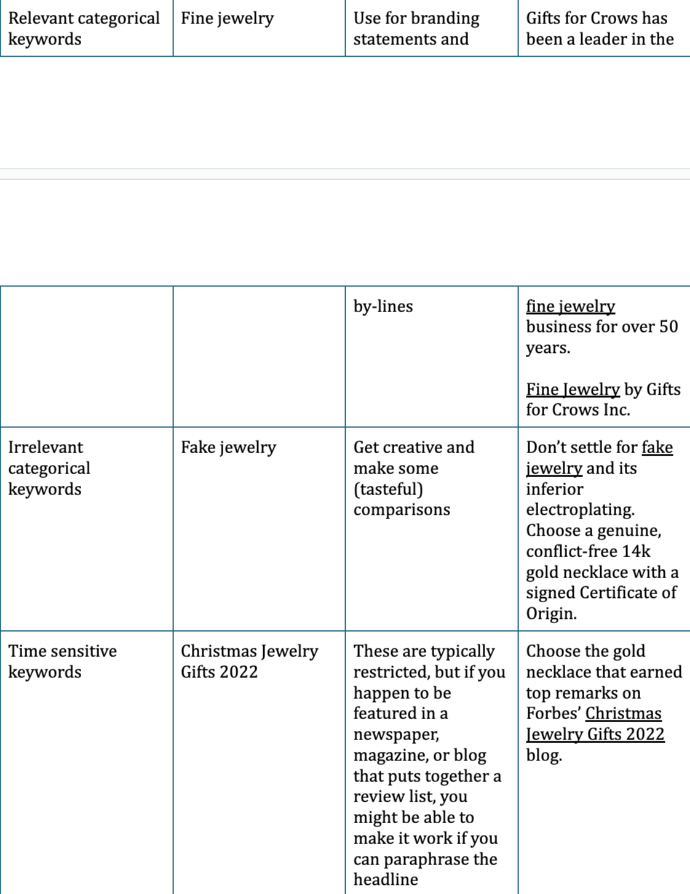
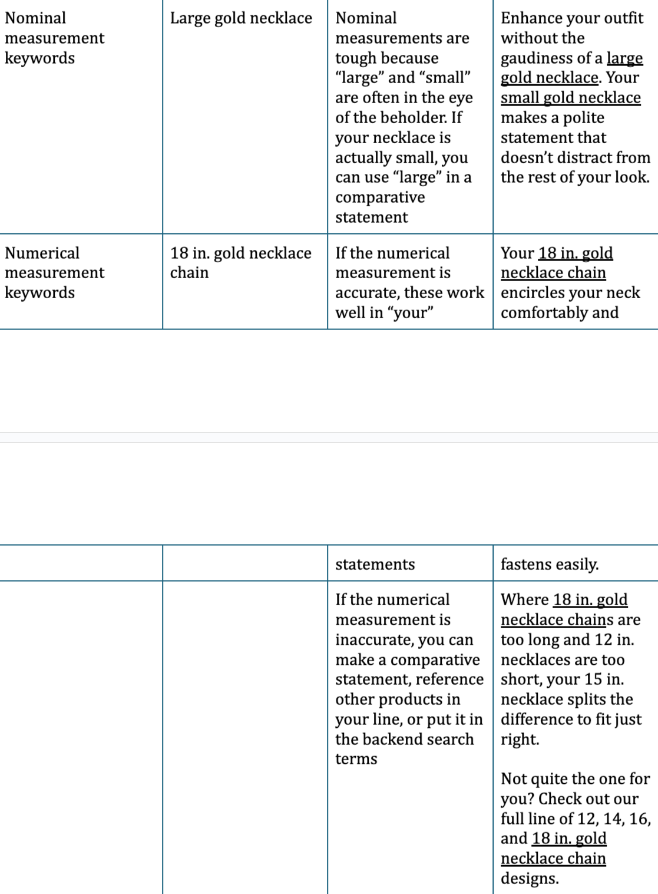
Some keywords on Amazon are truly unusable and should be reserved for backend keywords, but as you can see, knowing the strengths and weaknesses of different phrase constructions goes a long way. By recognizing different search term types for what they are, you can better imagine them working well within a sentence. It’s just like watching an awkward zigzag piece fall down the screen in Tetris. You see your piece, you see the empty spaces, then you line it up with the best place for it to fit.

Is Your Head Spinning from the Amazon Keywords Puzzle?
Feel like your keyword implementation doesn't stack up? Let us take a look! Reach out for a free listing analysis and mention this blog to get detailed feedback on any awkward keyword usage.
If you’re fascinated by the art of Keyword Tetris but don’t have time to play the game, we can help with that as well! We are here to incorporate the perfect keywords so your product listing soars into organic search results.
Check out our Amazon Listing Optimization packages, many of which include our signature Amazon keyword research magic. Even if your product is niche and the keyword tool results are sparse, we have a proven track record of implementing important keywords with finesse and drawing in shoppers with customer-centric text.
Leave a comment
Please note, comments must be approved before they are published